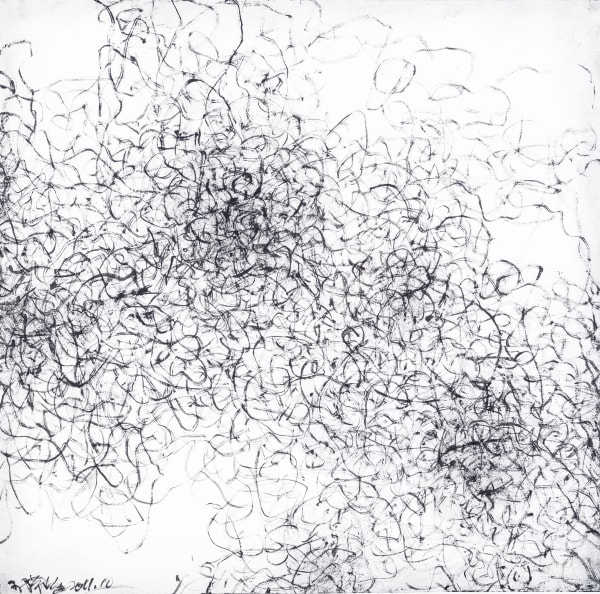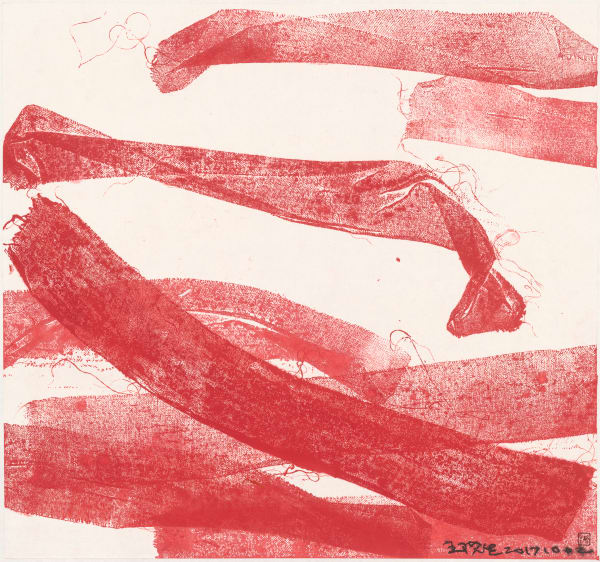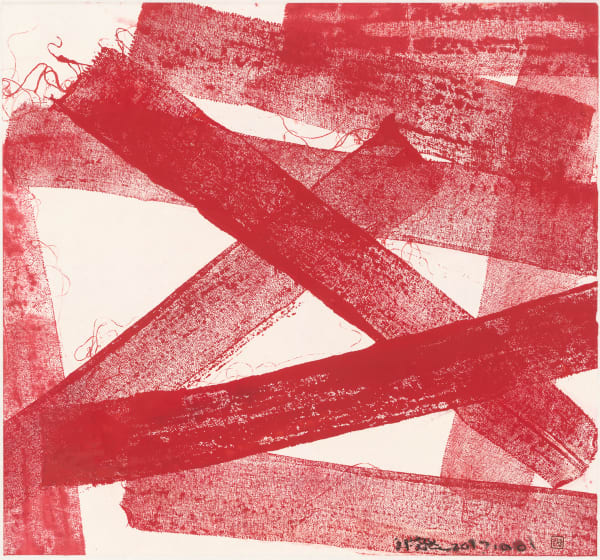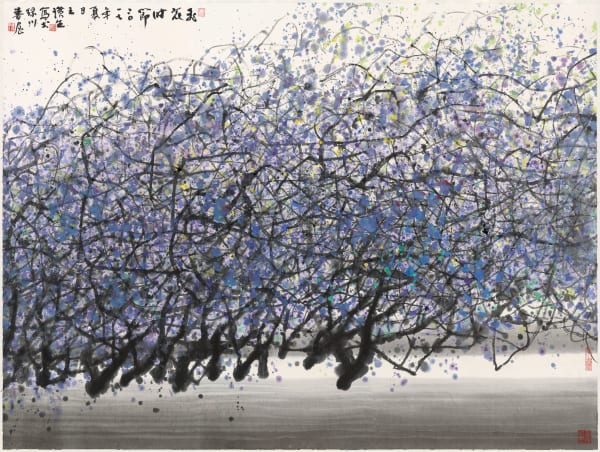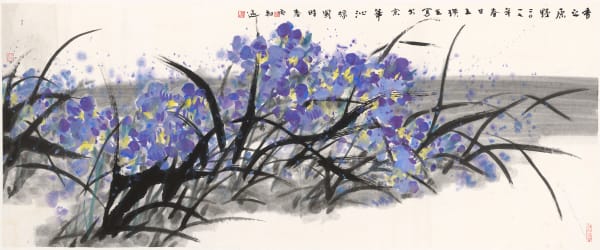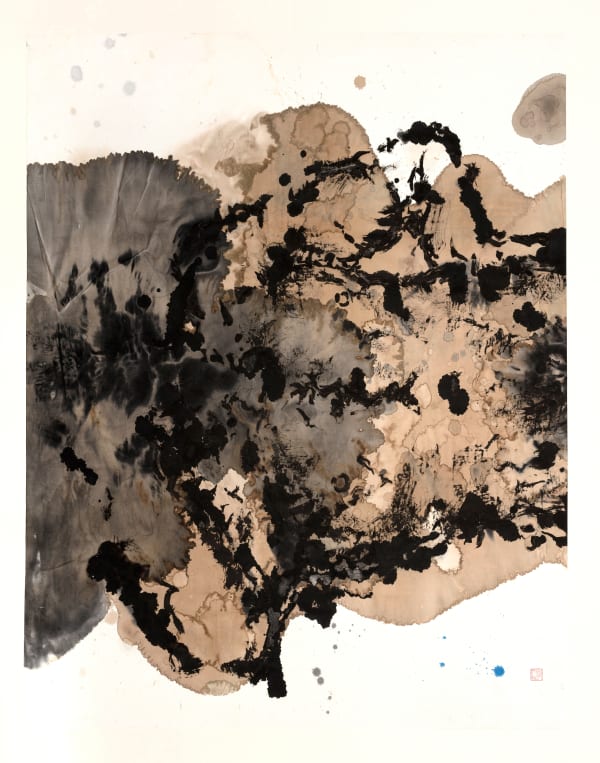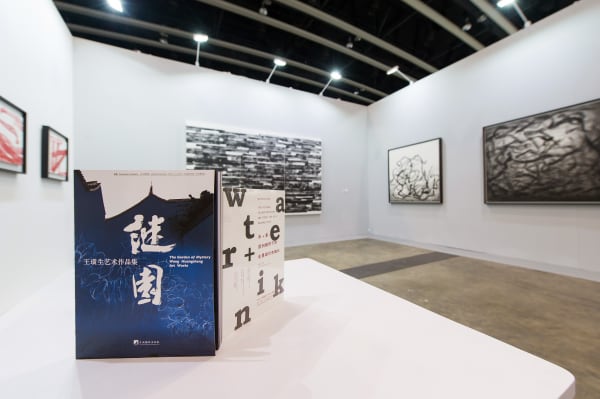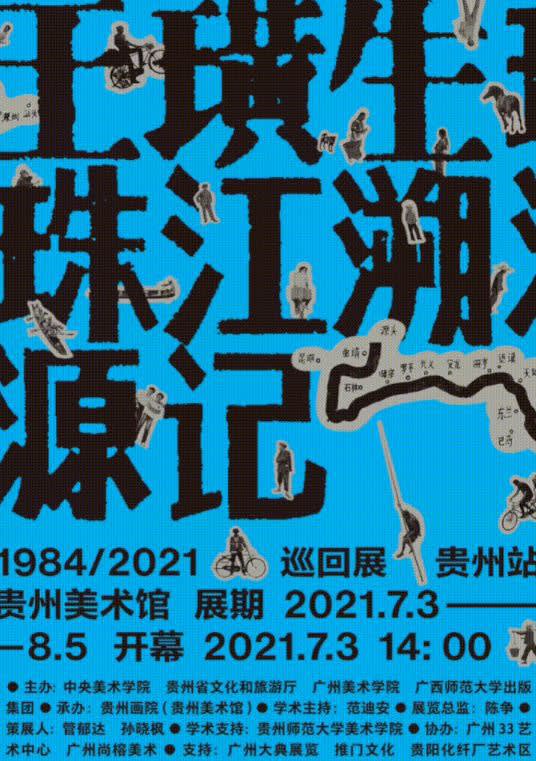Wang Huangsheng 王璜生
Wang Huangsheng (b. 1956, Jieyang, Guangdong Province, China) is a distinguished artist and scholar with special allowance of the State Council in China. With a doctorate in the History of Art from Nanjing Art Institute, Wang has held numerous prestigious positions as a museum director and academic leader in the field of fine art and contemporary art. He was the Director of Guangdong Museum of Art from 2000 to 2009 and the Director of the Central Academy of Fine Arts Museum from 2009 to 2017.
He is currently the Professor at Central Academy of Fine Arts, a member of the Academic Committee, Chief Director of Guangzhou Academy of Fine Art Museum, Director of the Center of New Art Museum, Deputy Director of the Curatorial Art Committee of the Chinese Artists Association and a specially-appointed professor at the University of Heidelberg, Nanjing Art Institute, Central University for Nationalities and City University of Macau.
In 2004, he was awarded the Knight Medal of Art and Literature by the French Government and in 2006 the Knight Medal by the President of Italy. In 2013 he obtained the "Beijing Best Educator" award from the Beijing government.
He is founder of Guangzhou Triennial, Guangzhou Photo Biennale, CAFAM Biennale, CAFAM Future Exhibition and Beijing Photo Biennale. He has been a member of the judging panel at the Kwangju Art Biennial, Olympics in Vision, Greece, the Chinese Contemporary Art Award, and the Venice Biennale China Pavilion.
Wang's works are held in the collection of the British Museum and the Victoria and Albert Museum in London, the Ashmolean Museum in Oxford, the Uffizi Gallery in Florence, Mantova Museum in Mantua, Hoffmann Collection in Berlin, MGM Chairman’s Collection in Macau and have been shown in galleries throughout China, Europe, Australia and in the United States.
Wang's contemporary vision is rooted in his past. Wang's father is a painter and calligrapher of the Literati movement. One can sense Wang's formal training in the quality of his lines, the way the ink ebbs and flows in varying saturations across the paper, reminiscent of Chinese calligraphy. He honours and establishes a foothold in tradition, but finds self-expression in a fluid, unrestrained yet controlled touch that evokes both physical and metaphysical depth, often with a single extended gesture.
-
 Moving Vision 1323《游‧象 1323》, 2013
Moving Vision 1323《游‧象 1323》, 2013 -
 Moving Vision 1322《游‧象 1322》, 2013
Moving Vision 1322《游‧象 1322》, 2013 -
 Metaphor Vision 2014《箴象 2014》, 2014
Metaphor Vision 2014《箴象 2014》, 2014 -
 Tracing Vision 161003《痕象 161003》, 2016
Tracing Vision 161003《痕象 161003》, 2016 -
 Tracing Vision 160923《痕象 160923》, 2016
Tracing Vision 160923《痕象 160923》, 2016 -
 Tracing Vision 160924《痕象 160924》, 2016
Tracing Vision 160924《痕象 160924》, 2016 -
 Metaphor Vision 2017111373-4《箴象 2017111373-4》, 2017
Metaphor Vision 2017111373-4《箴象 2017111373-4》, 2017 -
 Metaphor Visions 171003《箴象 171003》, 2017
Metaphor Visions 171003《箴象 171003》, 2017 -
 Metaphor Vision 2017111373-6《箴象 2017111373-6》, 2017
Metaphor Vision 2017111373-6《箴象 2017111373-6》, 2017 -
 Moving Vision: Avalokiteśvara《游象:觀自在》, 2017
Moving Vision: Avalokiteśvara《游象:觀自在》, 2017 -
 Silver Dew in Autumn Wind《金風銀露》, 2017
Silver Dew in Autumn Wind《金風銀露》, 2017 -
 Flying Season《飛花時節》, 2017
Flying Season《飛花時節》, 2017 -
 Blossom on Old Vine《老藤生花》, 2017
Blossom on Old Vine《老藤生花》, 2017 -
 Fragrance of Wilderness《香之原野》, 2017
Fragrance of Wilderness《香之原野》, 2017 -
 Daily-Practice, the Prose Poetries 181130《日課·雜詞181130》, 2018
Daily-Practice, the Prose Poetries 181130《日課·雜詞181130》, 2018 -
 Daily-Practice, Heart Sutra 191022《日課·心經 191022 》, 2019
Daily-Practice, Heart Sutra 191022《日課·心經 191022 》, 2019
-

Summer-Scape
21 August - 13 September 2024 Hong KongAs the vibrant city of Hong Kong empties out during the peak travel season, the 'Summer-Scape' exhibition invites both residents and visiting collectors to pause and immerse themselves in a...Read more -

SPIRIT AND LANDSCAPE
13 July - 10 September 2022 LondonFostering cross-cultural dialogue between East and West, 3812 Gallery brings Spirit and Landscape , the exhibition that celebrates Chinese contemporary artists and beauty of landscape painting across time and space....Read more -

Masterpiece London
30 June - 6 July 2022 Art Fairs, LondonFor Masterpiece London 2022, 3812 Gallery is proud to present Spirit and Landscape, a curated selection of major landscape works from the last one hundred years. One of the most...Read more -

Blessings
19 January - 28 February 2022 Hong KongA new year begins and everything starts anew. In Chinese culture, festivals and seasons bring family members together. The renewal of life evolves with the seeding of spring, planting of...Read more -

Reconnect
15 June - 31 October 2020 Hong Kong, LondonRECONNECT: The Summer Exhibition 2020, is a special exhibition programme presented for the reopening of our 3812 London and Hong Kong galleries from 15th June.Read more -

More than Ink
Chloe HO | Raymond FUNG | WANG Huangsheng | Victor WONG | YU Yang 23 January - 31 May 2020 Hong Kong, London3812 Gallery is delighted to present a selection of artworks by Chinese contemporary ink artists Wang Huangsheng, Raymond Fung, Yu Yang, Chloe Ho and Victor Wong in More than Ink,...Read more -

INK NOW Shanghai: Inquiry on Water
Shanghai Suning Art Museum 1 November 2019 - 31 January 2020 Others3812 REPRESENTED ARTISTS: Hsiao Chin | Wang Jieyin | Wang Huangsheng | Li Lei | Victor Wong INK NOW PROJECT ARTISTS: Liu Kuosung | Qiu Deshu | Wang Tiande |...Read more -

Wang Huangsheng: Lifelines
HONG KONG ARTS CENTRE, 5/F, PAO GALLERIES 3 - 12 September 2019 Hong Kong“Lifeline” is a term in English that implies the saving of life when one is in urgent need of help and the connotation of rescue is here intended culturally, as...Read more -

Mind-Scape V
Sophie CHANG | Chloe Ho | LI LEI | LIU Guofu | QU Leilei | WANG Huangsheng | WANG Jieyin | XUE Song 21 June - 17 August 2019 London3812 Gallery is delighted to announce that its annual exhibition Mind-Scape, now in its fifth edition, debuts at 3812 London from 21 June – 17 August 2019. Since its first...Read more -

Ink Asia 2017
Mind-Scape IV 15 - 17 December 2017 Art FairsARTIST: Wang Jieyin | Wang Huangsheng | Qu Leilei | Zhang Dawo | Jin Feng | Fung Yatfung | Lin Guocheng | Chloe Ho Venue: Booth C1, Hall 5B, Hong...Read more -

MIND-SCAPE III
WANG HUANGSHENG | QU LEILEI | SANG HUOYAO | PENG KANGLONG | LIN GUOCHENG | YU YANG | CHLOE HO 8 December 2016 - 28 February 2017 Hong Kong“Mind-Scape” artist group exhibition concentrates on the introspection in the process of creating from the artists themselves: how to look closer with their eyes, how to sense more with their...Read more
-

Wang Huangsheng: Tracing back to the Source of Zhujiang 1984
13 September 2021Wang Huangsheng: Tracing back to the Source of Zhujiang 1984 Wang Huangsheng's credentials as art critic, director, author, professor, and artist are long and varied....Read more -

Tokyo TDC Annual Award
Wang Huangsheng: Lifelines 28 January 2021We are delighted to share with you that our exhibition catalogue, Wang Huangsheng: Lifelines , has won a Tokyo TDC Annual Award 2021 (Prize Nominee...Read more -

Press | LUX Magazine Frieze London Special: The new age of ink art
3812 Gallery Co-founder Calvin Hui shares his insights of ink art market 13 May 2020'Navigating the deep waters of the Asian art scene could be treacherous, without a guide such as Calvin Hui.' - LUX Magazine Download the print...Read more -

Video | Wang Huangsheng: Breathe IN/OUT
A new installation, performance and video work 7 May 20203812 artist Wang Huangsheng created a new installation, performance and video work titled Breathe IN/OUT , which will be shown at his solo exhibition at...Read more -

Artist Diary | Wang Huangsheng's Diary of an Epidemic
Wang Huangsheng shares his new series with gauze and ink. 11 March 20203812: What motivated you to create such a diary series? Wang Huangsheng: During the pandemic I have had a myriad of thoughts and feelings, and...Read more
-

Lifelines
Wang Huangsheng 2019Thread-bound, 117 pagesRead more
Publisher: 3812 Gallery
Dimensions: 255 x 230 mm -

Mind-scape II
Wang Huangsheng, Liang Quan, Cao Jigang, Liu Guofu, Lin Guocheng, Zhu Jianzhong, Wang Shuye, Chloe Ho 2015Soft cover, 41 pagesRead more
Publisher: 3812 Contemporary Art Projects
Dimensions: 270 x 221 mm -

Mind-scape III
Group Exhibition 2016Soft cover, 95 pagesRead more
Publisher: 3812 Gallery -

Mind-scape V
2019Soft cover, 121 pagesRead more
Publisher: 3812 Gallery
Dimensions: 270 x 222 mm
-

ARTicle | Blessings
19 January 2022In this ARTicle, we would like to introduce Blessings, an artistic theme shrouded with spiritual meaning for the 12 featured artworks, that resonate with different...Read more -

ARTicle | From Corporate Collections to the landmark of the city: Calvin Hui and the MGM Chairman's Collection
15 September 2021For this edition of ARTicle , we will focus on the curatorial insight of Calvin Hui, co-founder of 3812 Gallery, and the development of MGM...Read more -
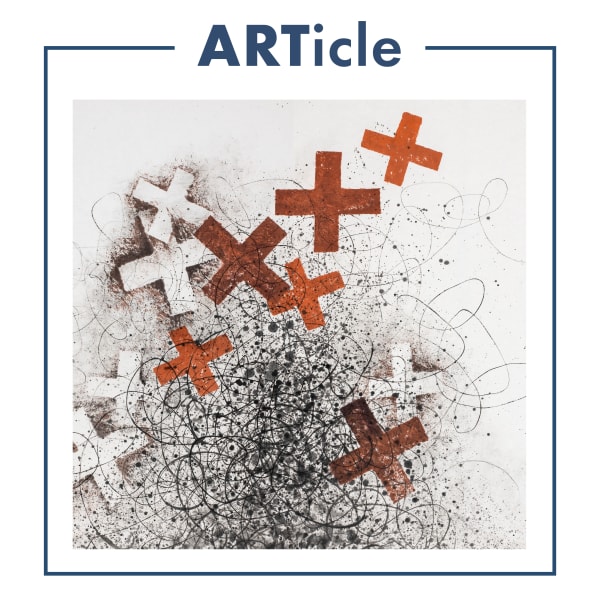
ARTicle | Lifelines: The Visual Poetics of Wang Huangsheng
by Dr. Katie Hill May 8, 2020ARTicle is a new feature curated by 3812 Gallery, presenting must-read articles by curators, scholars and art critics for your weekend digest.Read more


